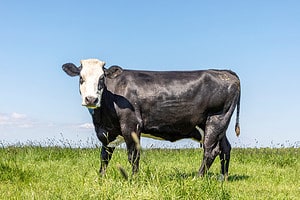If you want to impress someone, either on a first date or a dinner party at home, one of the best ways is with a well-prepared steak. But which one should you choose? You might be tempted to just pick the most expensive steak (or the cheapest, depending on who your guest is), but a lot of the flavor and enjoyment of a steak dinner comes out in the cooking and preparation phase. To help you make the right choice, and not ruin an expensive cut, this is a list of the most important types of steak cuts to know.
There are always going to be local names for steaks, or even some minor cuts that will be hard to find in your local grocery store. For this list, we collected the top 15 you are most likely to see in the store or at a butcher’s shop. We included some essential information about the taste and initial tips for preparation. For any in-depth information, you should find a recipe for the specific cut of meat you want to cook.
Here are the most important types of steak cuts to know.
#1 Filet Mignon

A large grilled filet Mignon steak with butter and thyme.
©Andrei Iakhniuk/iStock via Getty Images
The filet mignon is the most expensive of all the most common cuts of beef. But there’s a good reason for it. Filet mignon is extremely tender because it is cut from the tenderloin along the spine of the steer which doesn’t carry much weight or do any heavy lifting. Due to its tender feel, rich taste, and smooth meat, this is among the most important types of steak cuts to know how to cook.
Filet mignons usually come cut into small medallions. They are low in fat, so you should cook them slowly or sear them on both sides before serving them with a sauce that can bring out its strong flavor. Do not overcook them. They are small and lean so they will dry out quickly if you try to prepare them like any other meat. If you are not experienced with cooking meat, we recommend you practice with cheaper cuts of meat before taking on the filet mignon.
#2 Ribeye Steak
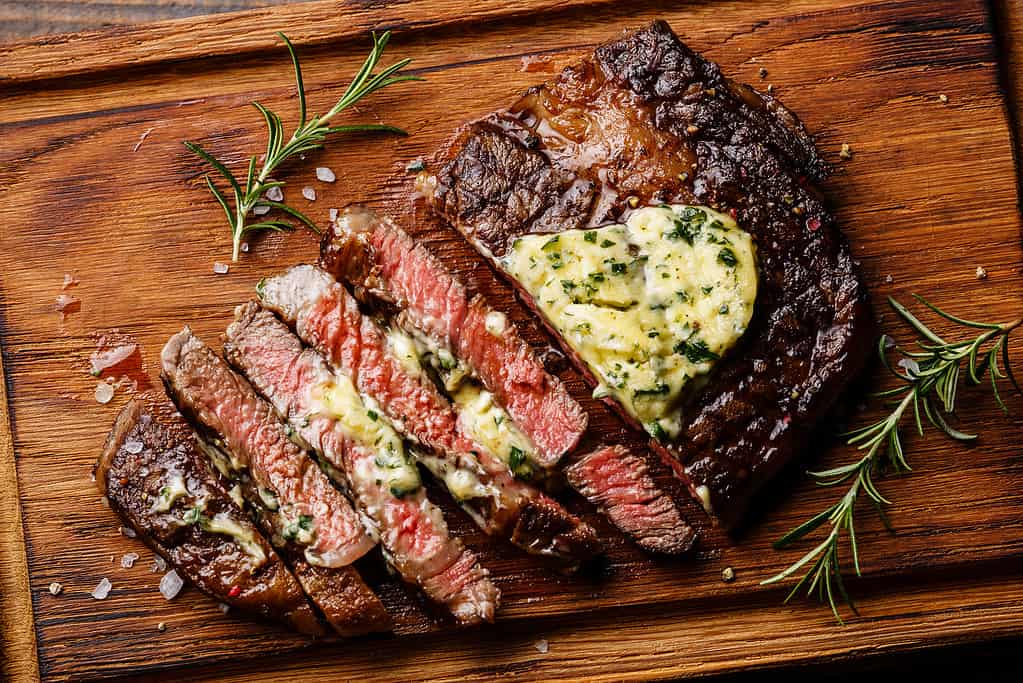
A grilled ribeye served without the bone.
©Lisovskaya/iStock via Getty Images
As the name implies, the ribeye is cut from the center of the rib section. It can be served with a bone or without. It usually has a lot of marbling on the edges and throughout the meat, which means this will be one of the juiciest and tastiest cuts of meat you can buy. You will want to cook this steak over high heat for long enough for the fat to reduce into the meat.
When preparing this one, be careful not to over-season! Salt and pepper will add a perfect amount of flavor to accentuate the natural taste of this cut. We recommend you keep in mind this rule of thumb when cooking meat: if you have to use barbeque or steak sauce with your meat then you’ve cooked it wrong! Your steaks should be delicious enough and juicy enough without any sauce. Most store-bought sauces overpower the taste of the steak, hiding all the good work you’ve done.
#3 New York Strip Steak
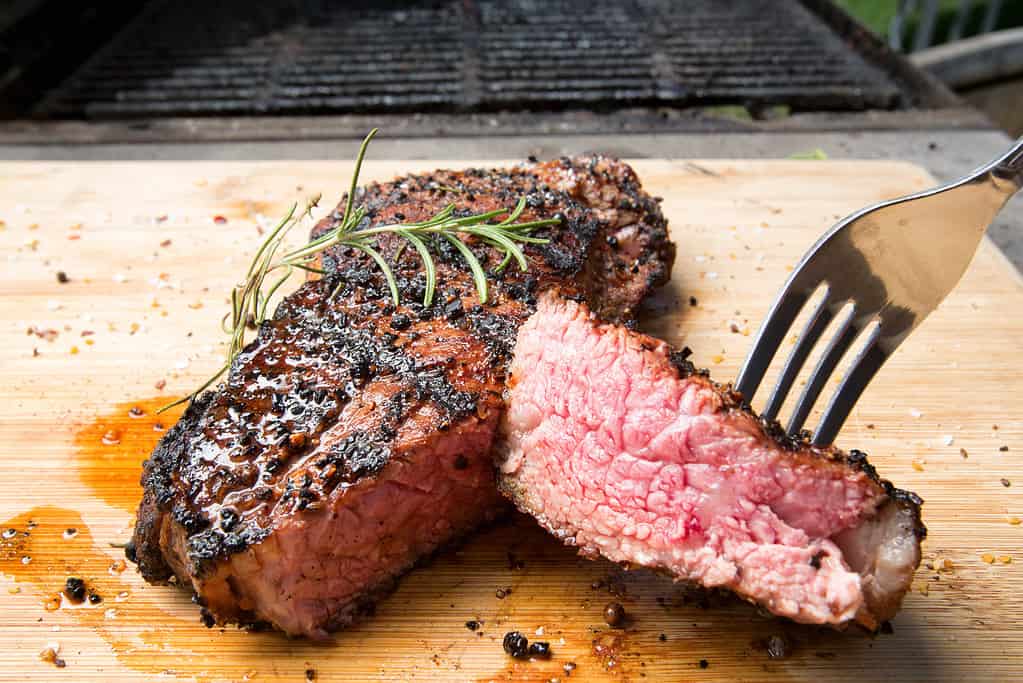
Freshly-cooked New York Strip. This is one of the more common you’re likely to find at restaurants.
©JPphoto1992/iStock via Getty Images
The New York strip steak is the same as a strip steak but without the bone. It is also known as a Kansas City strip steak when the bone is still attached.
This cut comes from the short loin, so it has less fat than the ribeye, but still has a smooth texture and buttery flavor. You should prepare this steak the same way you would prepare a ribeye: over high, dry heat.
#4 T-bone Steak

A raw cut of a t-bone steak. Notice the lack of heavy seasonings.
©Mironov Vladimir/Shutterstock.com
The T-bone steak is probably the most recognizable and classic of all the steaks on this list. It is actually two steaks in one: a New York strip and filet mignon, separated by the iconic T-shaped bone in the middle which gives this cut of meat its name. The porterhouse steak is the same as a T-bone steak, but a bit thicker and with a larger filet portion.
Again, this hefty steak requires almost no seasoning. The T-bone steak is so large that you can probably feed two or three people with just one steak. Popular ways of preparing this cut include broiling or pan-searing. Keep in mind the cooking preferences for both the mignon side and the strip side for optimum flavor and texture.
#5 Top Sirloin
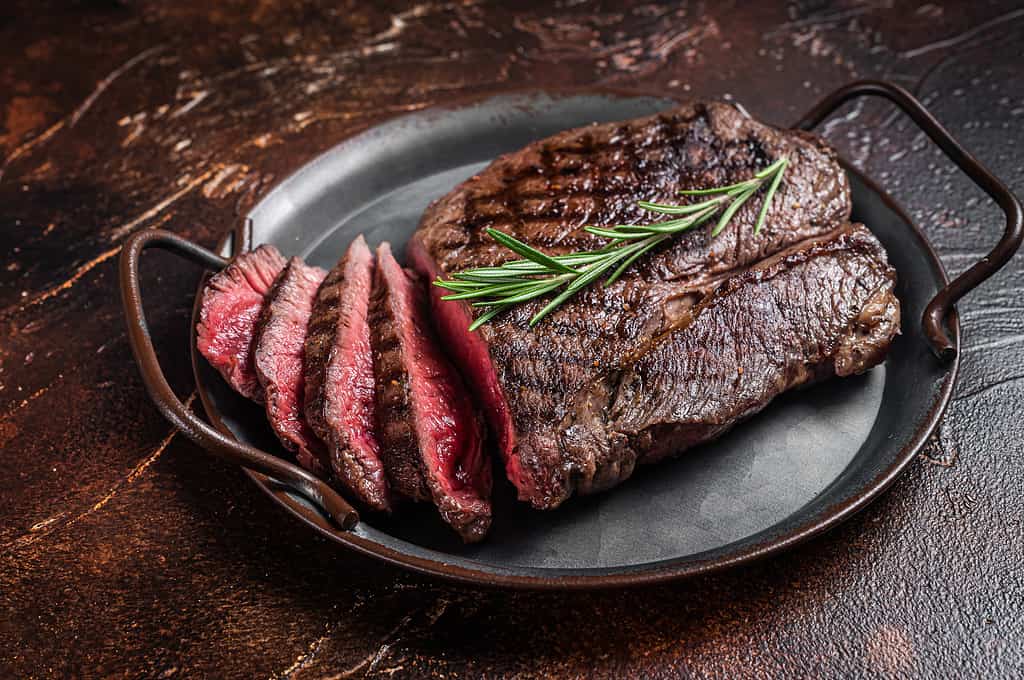
A top-sirloin cooked medium-rare, as it should be. This unlocks the most taste and leaves it tender.
©Vladimir Mironov/iStock via Getty Images
The sirloin section of the steer is near the hindquarters. These muscles are used a lot, so the meat tends to be lean and tougher than other cuts. Cuts from the bottom are generally just called sirloins and are popular in stews and roasts. This allows the tough meat enough time to become tender enough to eat. Top sirloin, as the name implies, comes from the top of the sirloin section and is usually more tender.
Top sirloin is a fantastic steak for beginners and is easily grilled or seared. Over-night marinades help unlock the flavor of this meat and make it easier to eat.
#6 Flat Iron Steak
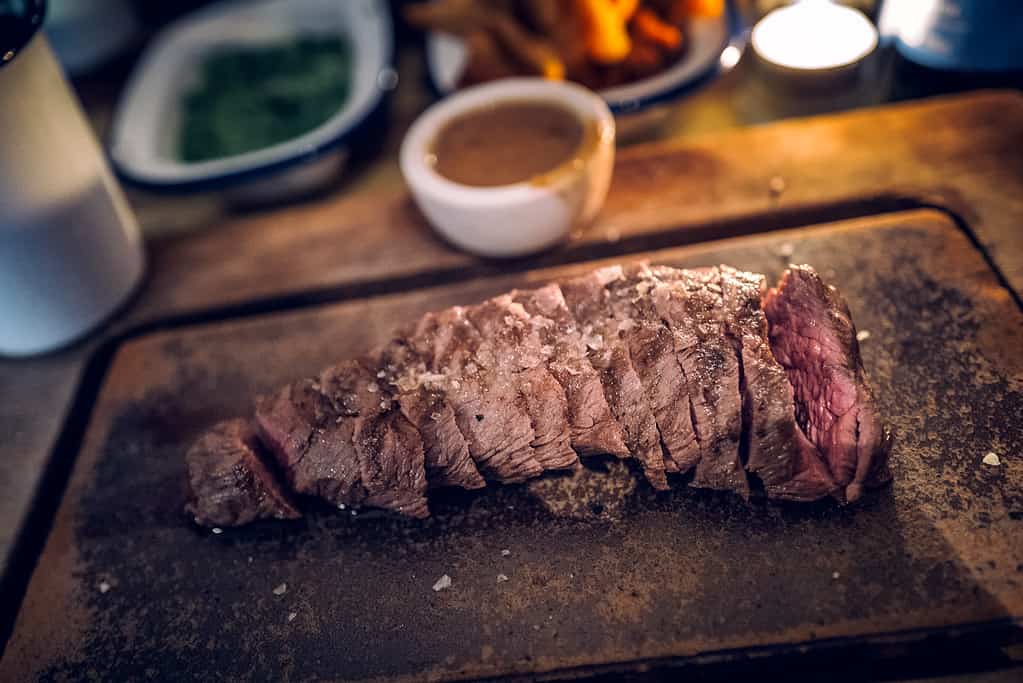
A flat iron steak in its natural habitat: a steakhouse.
©Yiran An/iStock via Getty Images
The flat iron is the second-most tender steak on this list (right behind the filet mignon). It is a relatively newer addition to the steak world and is cut from the top portion of the chuck section which is on the front shoulder. Not many non-steak enthusiasts have tried the flat iron, but it is quickly gaining popularity due to its tenderness, perfect marbling, strong flavor, and soft texture.
Cook these the same way you would a filet mignon: with tender love and care. Do not over-season with sauces or spices! Be very conservative with salt and pepper, even. They are perfect when broiled, pan-seared to medium-rare, or even grilled (if you’re careful with low heat).
#7 Denver Steak
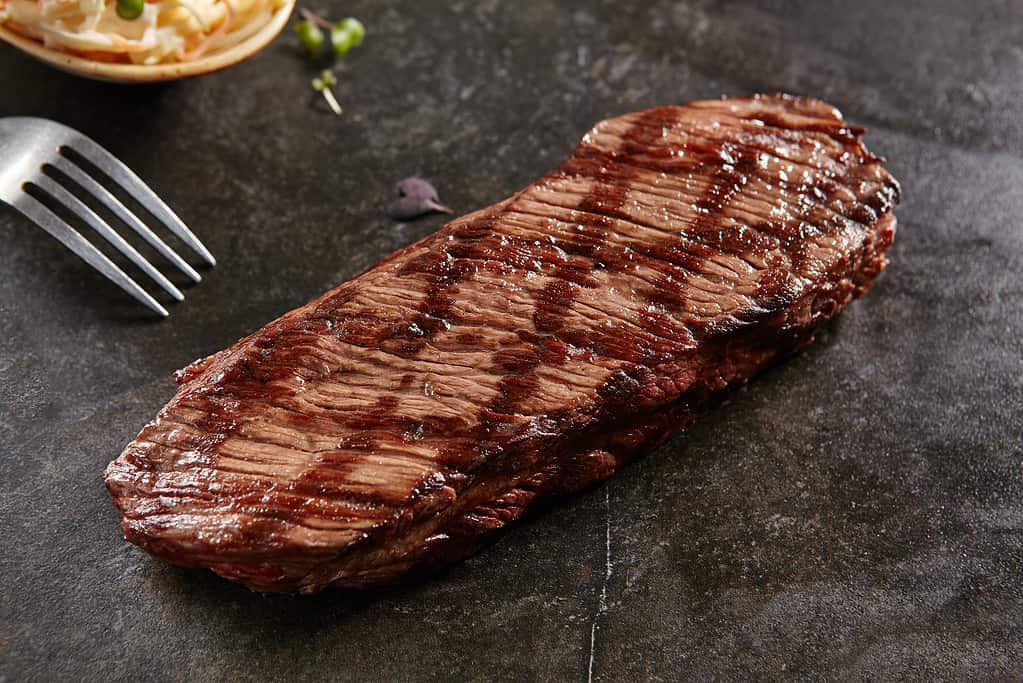
When grilled properly, your Denver steak should be brown on the outside, and pink on the inside.
©Ryzhkov/iStock via Getty Images
The Denver steak is just over a decade old! This steak comes from the eye of the chuck, the same cut as the flat iron. Being from the chuck, you might expect this piece to be very tender as well, and you’d be right!
The Denver steak is becoming increasingly popular because it is very tender and has amazing marbling. Usually, the meat from the chuck goes straight into stew pots or roasts (like the chuck roasts), which makes this steak especially unique.
#8 Flank Steak

It is perfectly fine to serve your flank steaks cut like this. If you cooked it properly, the dipping sauce will be unnecessary.
©VeselovaElena/iStock via Getty Images
Flank steaks are tasty, tough, and fibrous. They come from the lower abdominal area, which means they work hard, leading to very tough meat. This cut is usually included as part of a larger meal to add a very strong beef flavor without becoming the main attraction.
You should definitely tenderize this meat with marinade and cook it fast to avoid making it too tough to eat. As with all tough cuts, you should always cut the flank steak against the grain to make it easier to eat.
#9 Flap Steak
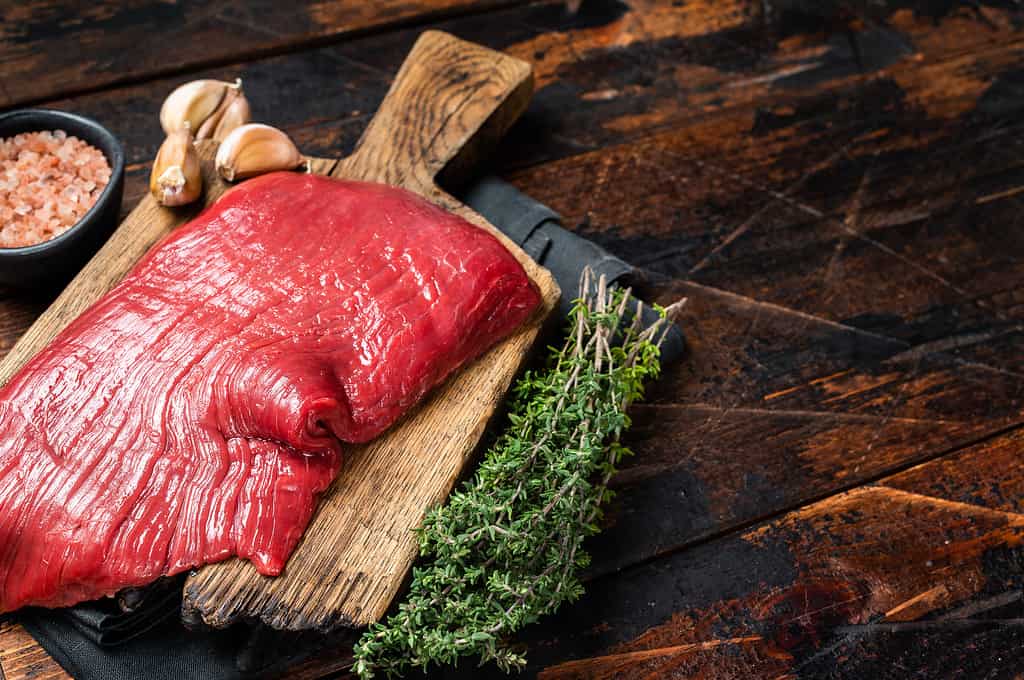
Flap steak before cooking. This cut is probably too raw for most people.
©Vladimir Mironov/iStock via Getty Images
Another cut from the sirloin section. This cut is actually very similar to flank and skirt steaks, so if your local butcher or grocery store happens to run out of those, a flap steak is a fantastic substitute.
Flap steaks are best served in very thin cuts after grilling them over medium to high heat. If you marinate these overnight beforehand, you’ll be hard-pressed to find a more delicious treat during your week.
#10 Hanger Steak
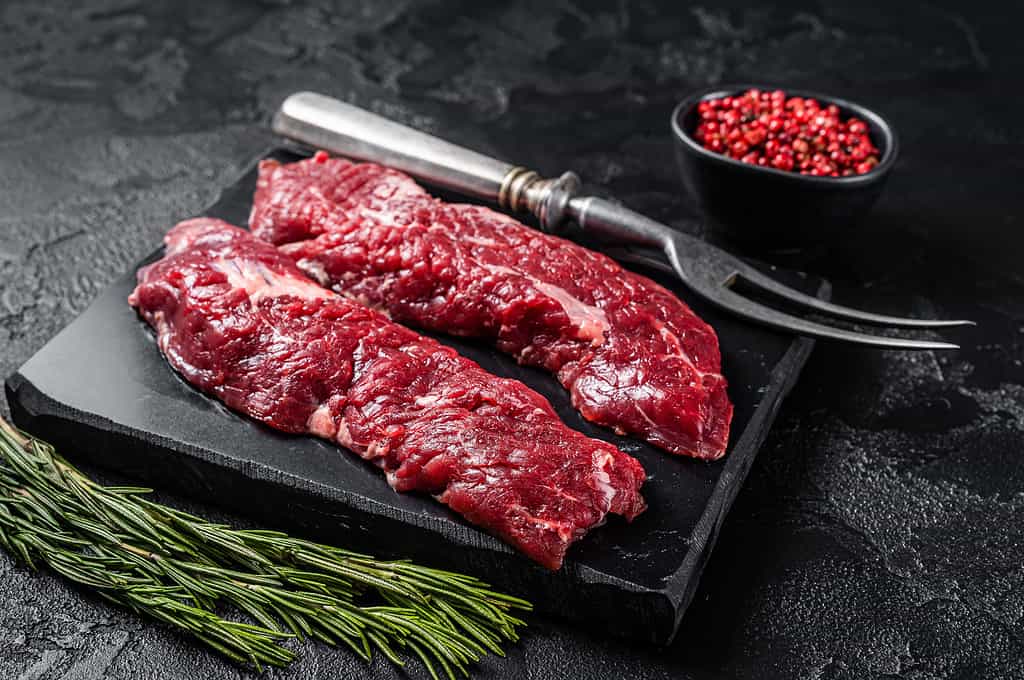
The hanger steak is also known as the machete steak.
©Vladimir Mironov/iStock via Getty Images
The hanger steak is called that because it hangs between the loin section and the rib section. It is popular with restaurants because of its intense beef flavor. It pairs very well with citrus dishes or acidic marinades. You will often find it cut into strips as part of a larger meal.
Do not cook this steak past medium or it will be too tough to eat.
#11 Rump Steak
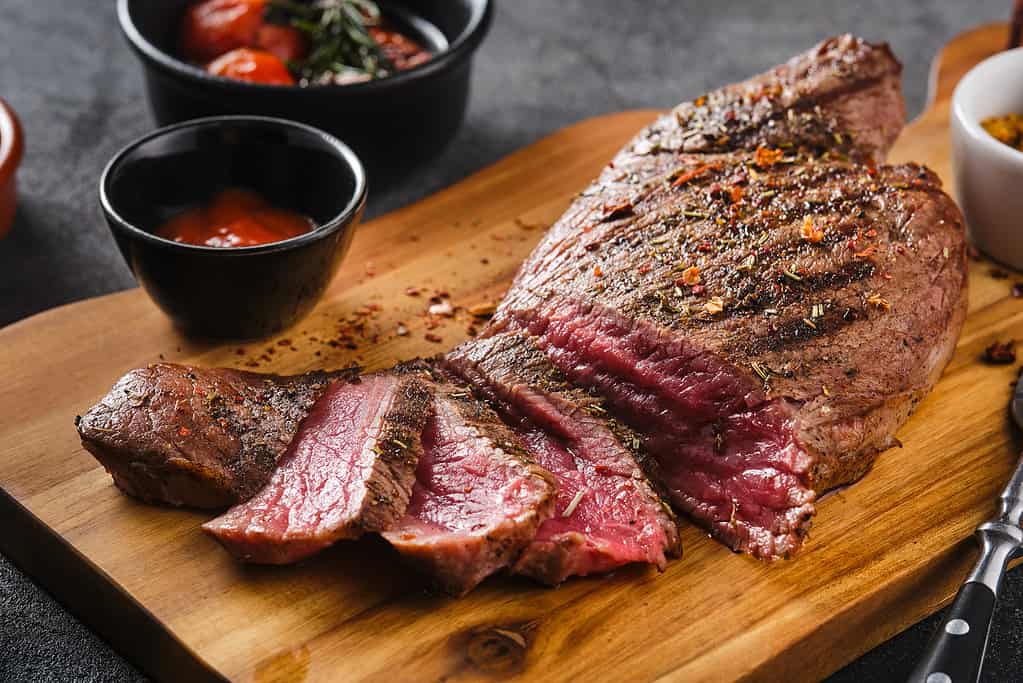
You should cut your rump steak against the grain like this one to make it easier to eat.
©Fotoatelie/iStock via Getty Images
Also known as the round steak or the butt steak, for obvious reasons. This is a cheap steak because it is one of the tougher cuts. If you are a beginning home chef, this is a great cut to help you learn the importance of not over-cooking your meat.
It is essential to marinate this cut for a long time before you begin to cook. Broiling and pan-frying are also great cooking methods to avoid over-cooking.
#12 Skirt Steak
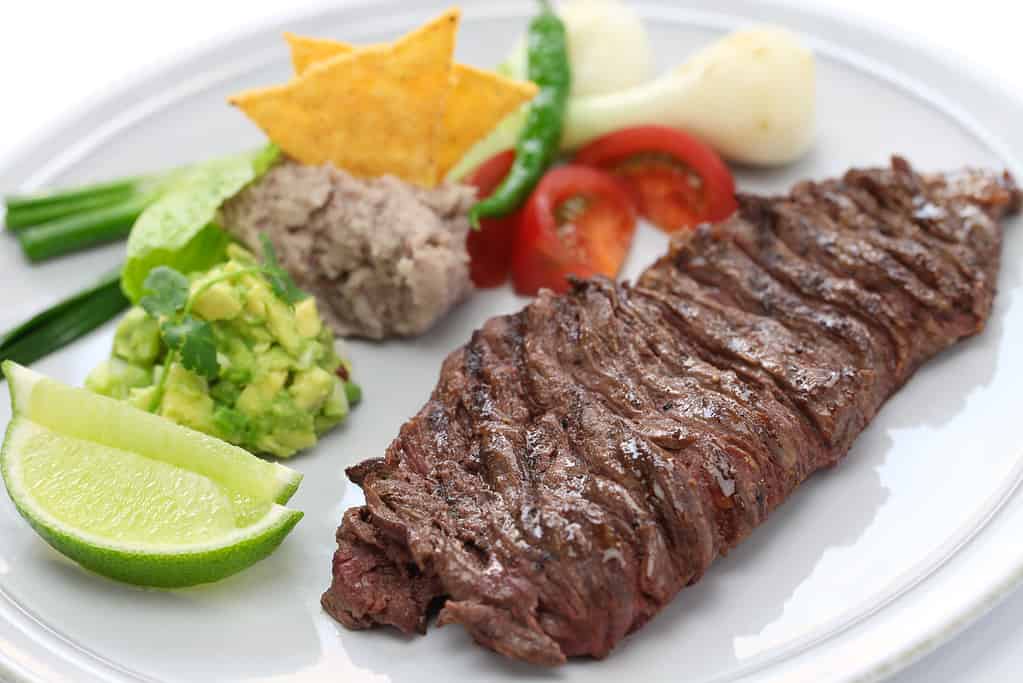
A skirt steak is a fantastic addition to any Mexican-themed party.
©bonchan/iStock via Getty Images
If you enjoy fajitas, then you should know you’ll love a skit steak. This cut is very popular in many Latin American dishes. It is also a main ingredient in stir-fry. The skirt steak is a bit tougher than the flank steak and has a stronger beef flavor profile.
If you have tried cooking flank steak, or similar cuts, then the same instructions apply here. We suggest marinating this one for a least a half hour before you begin cooking over high heat to medium-rare at most.
#13 Tomahawk Steak
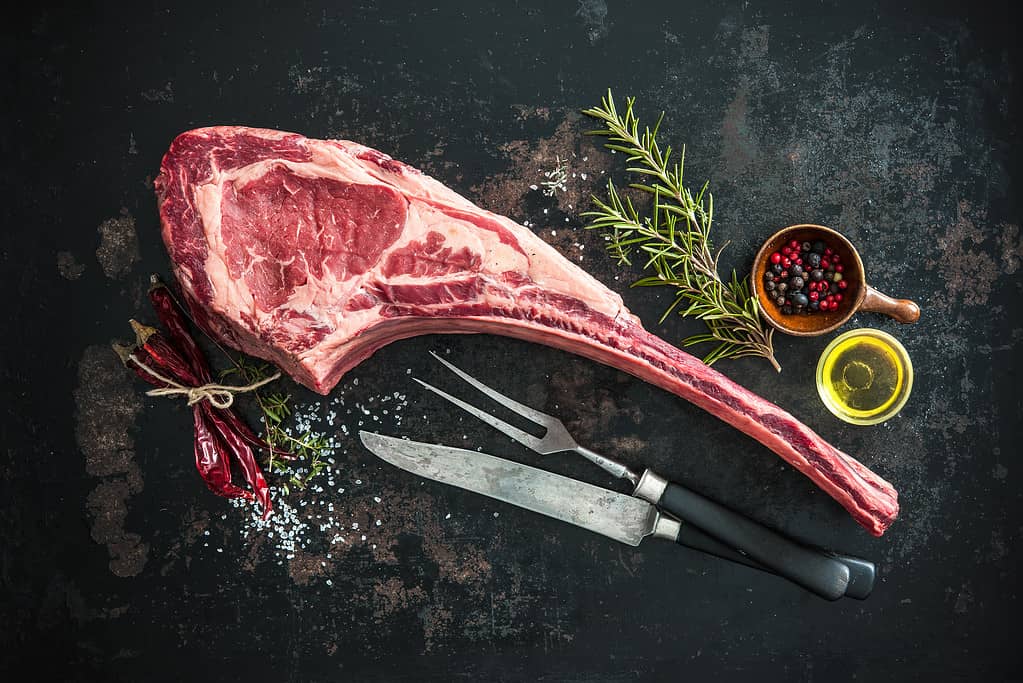
Dry-aged raw tomahawk steak. We recommend you try other steaks first!
©AlexRaths/iStock via Getty Images
It wouldn’t be a true list of the most important types of steak cuts to know if the tomahawk wasn’t on it! If you’ve ever had a tomahawk steak, then you’d definitely remember it. The tomahawk steak is essentially the same as a ribeye steak but with extra rib bone attached along with more meat. This monster steak is enormous. You can often find it included as an eating challenge at many steak houses around the United States. It has a wonderful taste due to its amazing marbling and tender meat.
If you have the courage to cook this beast, you should at least have some experience cooking other cuts of meat. It is usually only prepared by pan-searing the steak first before completing the process in the oven or broiler.
#14 Cube Steak
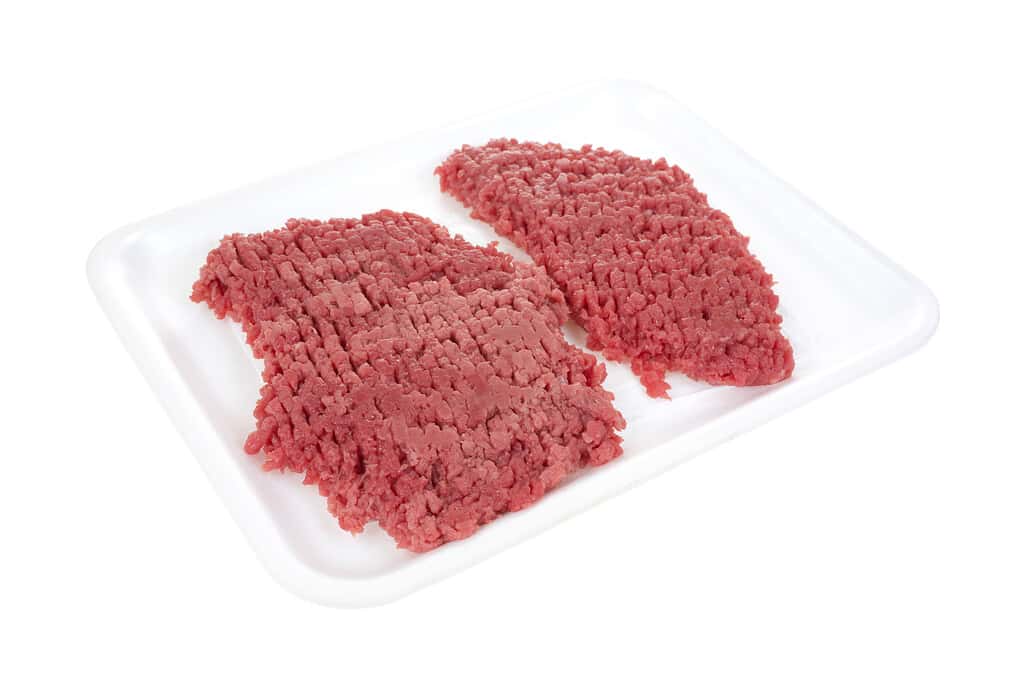
This is not, in fact, ground beef.
©BWFolsom/iStock via Getty Images
The cube steak might look like ground beef, but it isn’t. It’s a very thin cut of meat that has been pounded relentlessly to make it tender enough to eat. Cooks will use this cut of meat for chicken-fried steaks or other similar dishes. It is easy and fast to cook. There are more ways to prepare this meat that won’t ruin the cut than other pieces, so it makes a great beginner option.
#15 Tri-Tip Steak
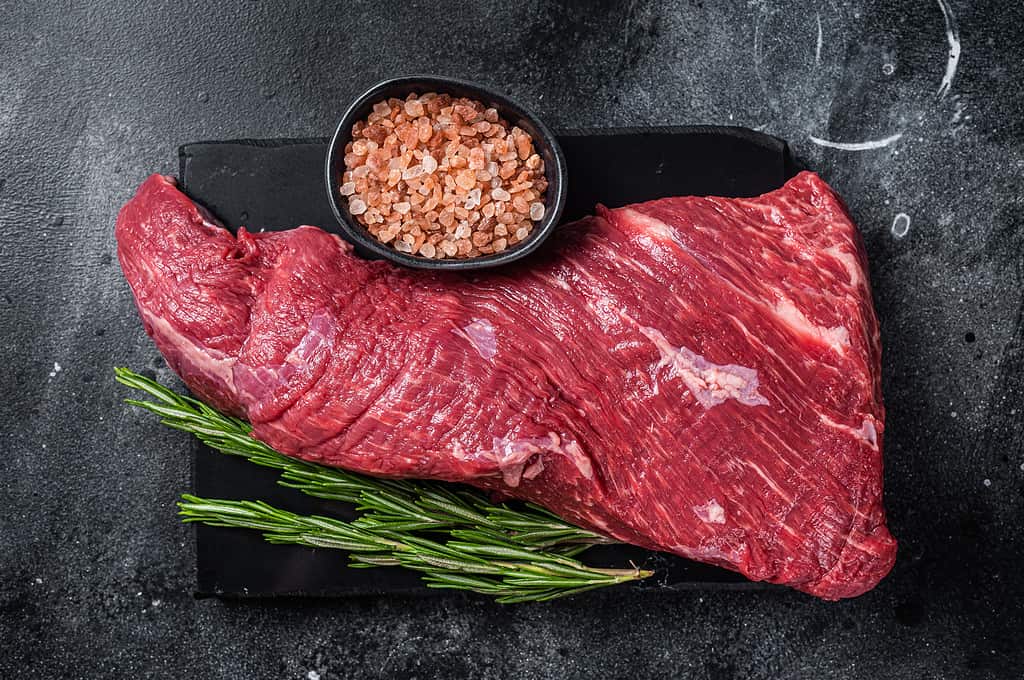
The amazing marbling you see on this tri-tip is what gives it the rich flavor that makes it popular.
©Vladimir Mironov/iStock via Getty Images
If you have ever had a tri-tip roast, then you’ll be familiar with the taste and feel of a tri-tip steak. This cut comes from the bottom of the sirloin section, so you know it’s going to be delicious!
Like other steaks from this part of the steer, this one doesn’t need any help from seasonings or sauces. Light marinades are your best choice here. Nothing heavy.
In fact, just to make sure you’re cooking your steaks right: if you want to learn to cook and serve your steaks properly, don’t use steak or barbeque sauces at all! Remove all seasonings from your pantry except salt and pepper. Only after you are familiar with what cuts you like, and their different flavor profiles, should you begin to experiment with some other, light seasonings.
That’s it! That’s all the most important types of steak cuts to know and how you should approach preparing and serving them. In the end, though, the fun of cooking is all in the experimentation and exploration. So get in the kitchen and see what you like!
Thank you for reading! Have some feedback for us? Contact the AZ Animals editorial team.






